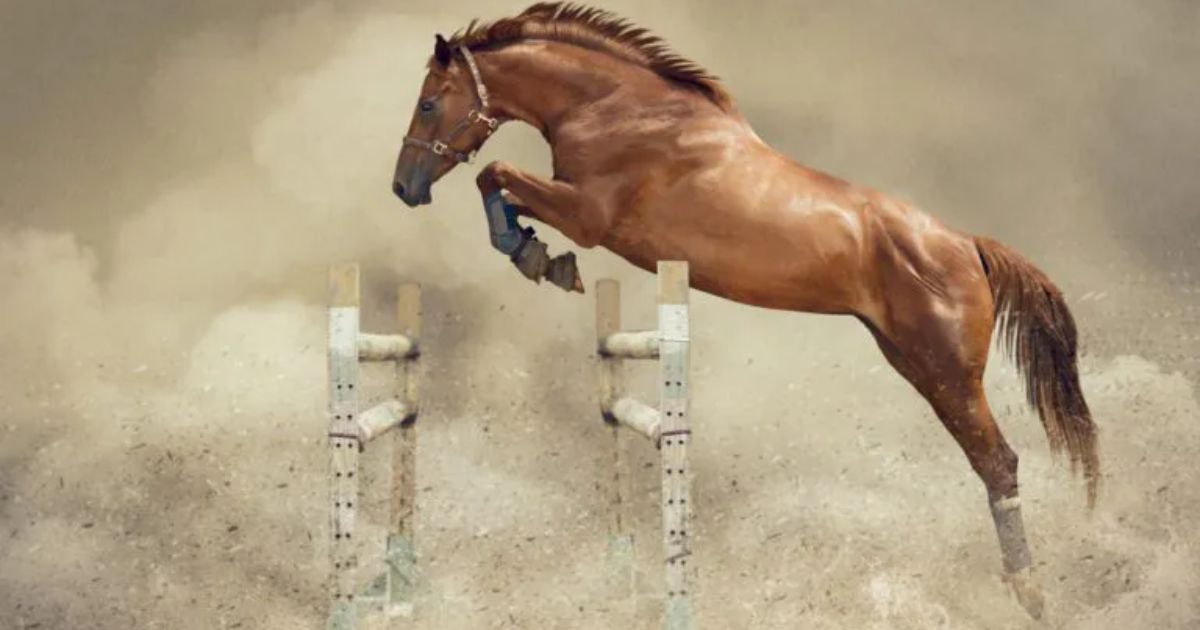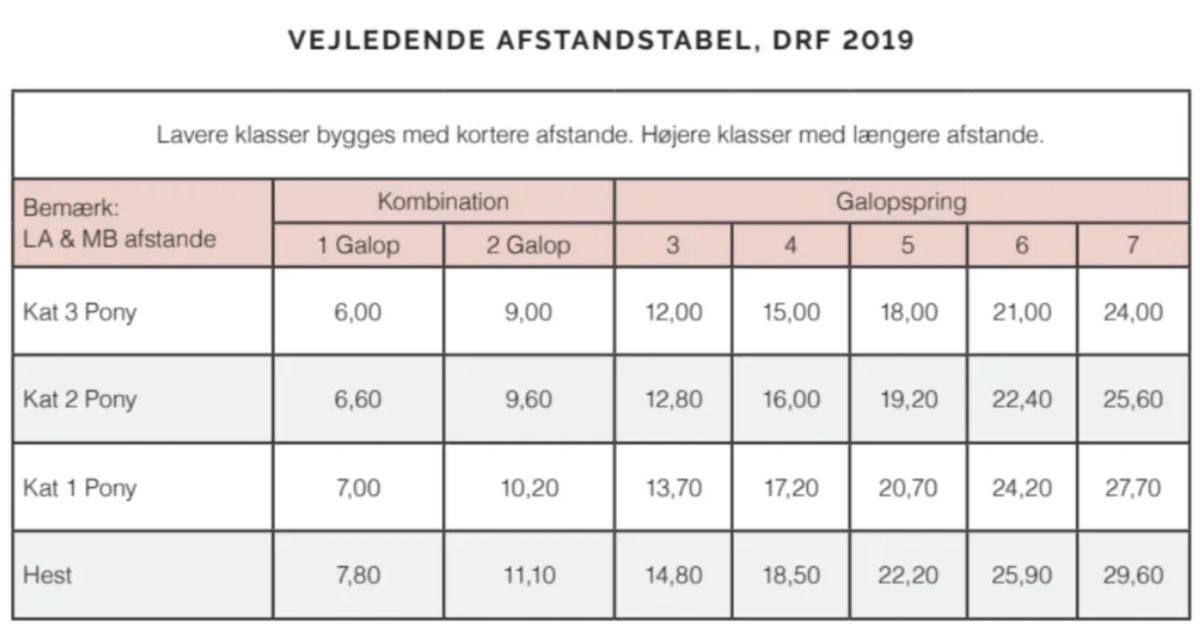Menu

Free jumping can be done with all horses. It can be both fun and a good change from the usual training – and it can give the rider a much-needed day off. But free jumping can do more than that. If you do it correctly, it can improve your horse's strength and balance over jumps. Likewise, it gives the horse an opportunity to improve its technique without being disturbed by a rider. All in all, free jumping can thus strengthen your horse's confidence in a way that you will notice when you later enter a show jumping course. Here you get an overview of how to start free jumping your horse.
If your horse is to end up with strengthened rather than weakened confidence, it is important not to demand too much of it. Of course, you may challenge it, as it should ideally develop, but it can also become too much of a good thing. But how do you then assess what your horse can and cannot do? In relation to your horse's condition, and how far it is in its jumping training, consider this:
Read also: When the horse "Catwalks": How to spot and remedy the problem
Free jumping can be really good for teaching young horses to become familiar with the art of jumping – and especially with an inexperienced horse, the above questions are good to consider. Maybe a couple of poles on the ground and a small cross are more than enough? Maybe the goal should just be to get it over? If the horse is very young, around 2-4 years old, then keep the obstacles under 60 cm, so it can become familiar with jumping. The same naturally applies when the horse is to start under a rider. For even if a (young) horse can free jump 110 cm or more, it is far from certain – or safe – that it can do the same when suddenly someone is sitting in the saddle.
Even if the horse "just" has to free jump, it is important that you warm it up properly. This is particularly important when the horse is to jump high, as the muscles are pushed into extreme positions and the tendons are more stressed when the horse takes off and lands. The extent of the warm-up naturally depends on the horse's age, condition, and how much and how high it is to jump. You can, for example, lead your horse around at a good walking pace for 10 minutes, or let it move forward well in a lunge, then put it in trot and finally canter. Remember to do it on both reins. If the horse is not used to going on a lunge, you might get it to run around a bit on the riding arena.
As you may already know, free jumping always takes place in a running lane, which is made along the fence or barrier of the riding arena. With a lunge line or a screening tape tied around the supports on the opposite side, you quickly create a path for the horse over the jumps. If you also set up an extra jump support a couple of meters in front of the first jump and tie the rope or tape around it, you avoid the horse being tempted to run around the first obstacle.
If you set up several jumps, then it is crucial to have the right distance between them. If you don't know how big your horse jumps on a free jumping course, then you can find help in the illustration below. As you can see, the distances depend not only on the horse's height but also on the height of the obstacles.

The best thing might be to set up a course with the distance that you think is correct, lower the jumps completely and let your horse run through. Then you can adjust the distances before you set up the obstacles and continue with the training.
Remember always to keep a good distance from the fence or barrier on the short side. A good rule of thumb is that the last jump should be at least 20 m from the back wall.
It is always good to have the first obstacle be a cross or maybe even just a pole. When the first jump is manageable for the horse, it avoids the horse stopping because the task seems insurmountable. At the same time, it becomes possible for it to start in trot, and then it can go into canter after the first jump. Therefore, you can also advantageously lay out three trotting poles as the first obstacle.
Read also: Why you should let your horse graze in the pasture
How many jumps you choose to set up naturally depends on the horse's level – and how big a riding arena you have. In the illustration, you can see four examples of what a free jumping course could look like. You should imagine that the horse runs in from the left. The first example is for the horse at a lower level, while the last one is something more challenging, but the difficulty level of course also depends on the height of the individual obstacles.

As you can see, there is a so-called landing pole after the last obstacle in the last example. Landing poles can be used for horses that rush too much through the course or that tend to take too long or too short steps. You can also lay a pole between two obstacles to influence how it sets its steps. Here, one usually chooses to have a single canter stride between the pole and each obstacle.
As mentioned, it is important to make it a good experience for the horse. If your horse suddenly stops in front of an obstacle, right in the middle of the running lane, then you must not let it run back. It needs to learn that it has to get all the way over to the other side. The opposite would only weaken its confidence. However, this also does not mean that you should not listen to the horse – for it has probably stopped for a reason. If you can't immediately get it over by using your mouth and possibly hitting the ground with a whip, then you should consider lowering the jump. The most important thing is after all that the horse gets over and does not run back.
When the horse stops or otherwise shows that it is uneasy about the situation, it is up to you to turn it inward. For as most owners fortunately think, horses are never just "stupid". It is us who demand something of them, and therefore it is also our task to find out what we can do to help them on their way. What can I do to create a good experience? Should the expectations maybe be lowered? Do I maybe actually need help from someone who understands it? These are just some of the questions one can rightly ask oneself. Never free jump the horse alone, and do not be shy to ask for help – then it will surely be a good experience.
Read also: Stable Bible: 10 Commandments to make the stable a pleasant place to be